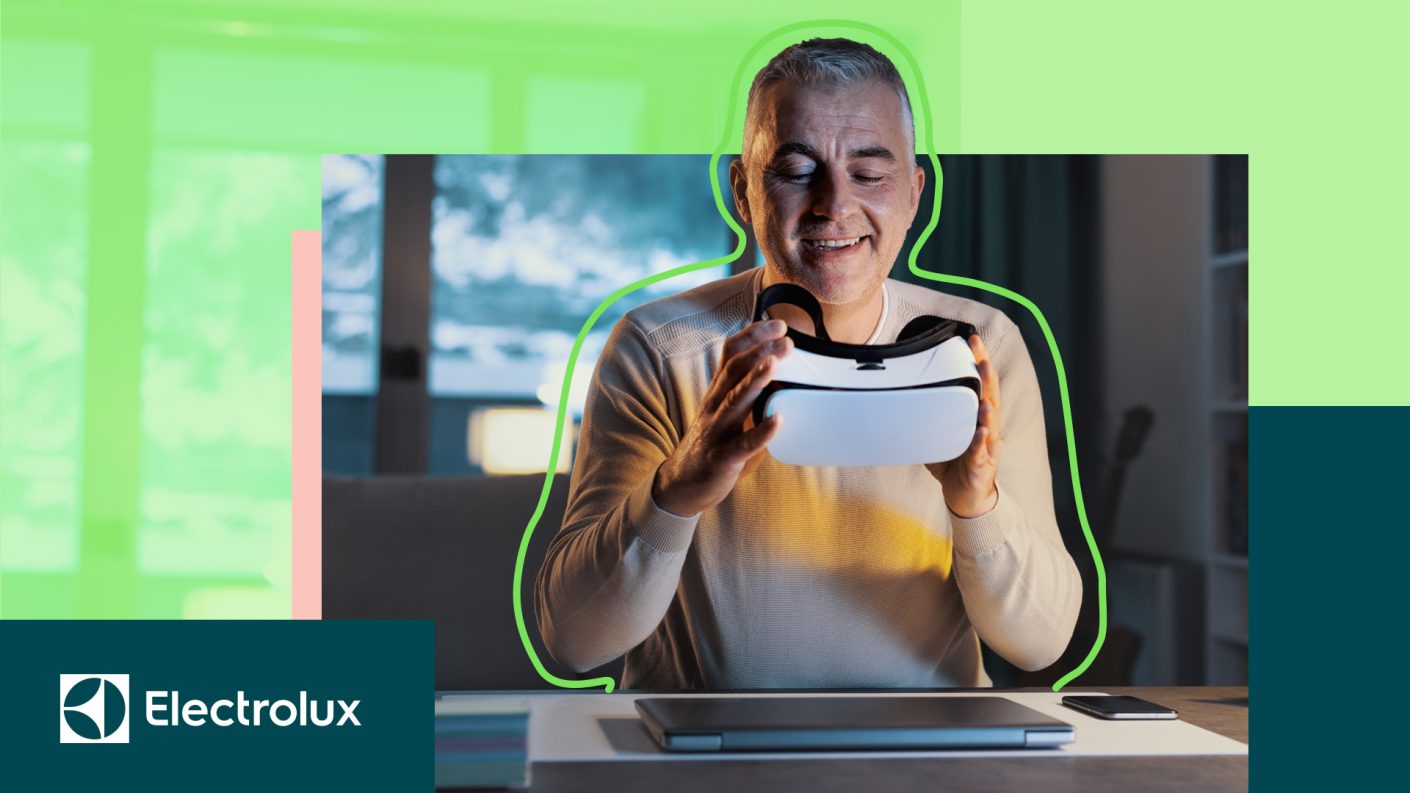Case
Chilling with Electrolux and VR
How the interplay between classical qualitative and Virtual Reality (VR) generated both efficiencies and effectiveness in usability and innovation research.


How it started
Electrolux were looking to develop a Best in Class Fridge-Freezer, aiming to become the preferred brand amongst premium users in selected markets. Insights were required on key usability and design aspects. Prototypes were available in 3D rendering. Could we develop a VR based research design that tapped sensitively into a full range of usability aspects – and for a broad age group from 20 – 60 year olds? We could – and did!
How we inspired change
We developed a sequential approach 3 key markets – Sweden, Italy and Germany.
- VR Interviews: we conducted a total of 54 VR interviews where participants could experience the new prototype up close and provide feedback for improvement.
- In-person focus groups: after the VR experience, individuals joined a highly engaged group discussion zooming-in on the virtual prototypes.
The approach worked across age groups – in fact older respondents seemed to have the least problems adopting to the VR atmosphere!
How it lives on
The insight outputs more than fulfilled all our expectations:
- VR Interviews proved a very immersive experience, with high levels of curiosity, low to no inhibitions, and a high degree of playfulness. A potent mix of flexibility and speed was achieved in prototype optimisation – 3D renderings could be changed from one fieldwork session to the next.
- Designers – even more flexible and open: VR offers flexibility after the research has finished. Once a physical prototype exists, the creators are psychologically “stuck” with it. Not having a prototype made the designers more flexible and open to the results.
- In a subsequent quantification phase, this model tested extremely well – thanks in part to the rich input from this innovative qualitative phase.
“Using VR as a part of the research proved to be a very useful tool to gain in depth consumer feedback on our prototypes. In fact, we have continued to use VR in this type of research as it is both powerful from a research point of view and a fun experience from a respondent point of view.”
Let’s connect